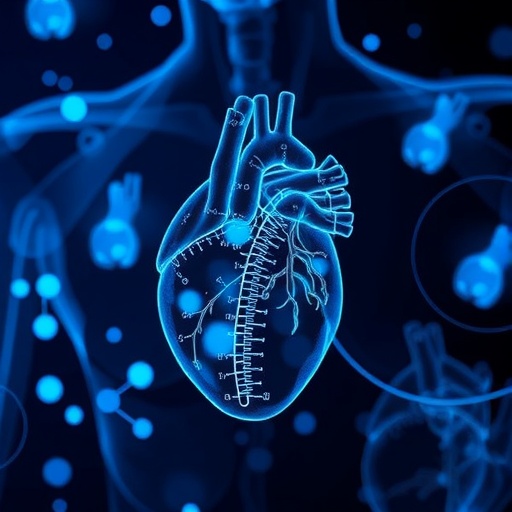
In the rapidly evolving intersection of forensic science and medical technology, the handling of cardiac implantable electronic devices (CIEDs) during postmortem examinations has emerged as a critical and complex issue. Cardiac devices such as pacemakers, implantable cardioverter-defibrillators (ICDs), and cardiac resynchronization therapy devices have become instrumental in managing arrhythmias and heart failure. Consequently, their data hold invaluable information that can unlock the circumstances surrounding a person’s death. Yet, the extraction and interpretation of this data postmortem are fraught with challenges related to technical expertise, data preservation, and ethical considerations. A recent pioneering study by Gaertner et al. published in the International Journal of Legal Medicine lays out a comprehensive protocol aimed at standardizing postmortem data retrieval from CIEDs, thus minimizing data loss and avoiding conflicts of interest that can compromise forensic investigations.
Forensic pathologists face significant hurdles in dealing with CIEDs after death. Unlike traditional autopsy specimen collection, these devices require specialized interrogation tools and software typically proprietary to device manufacturers. Without standardized methods, valuable diagnostic and chronological data stored in the device may be inaccessible or damaged, severely impeding cause-of-death determinations. The authors emphasize the growing necessity of creating a universally applicable process that bridges the gap between clinical cardiology and forensic examination, ensuring that data extracted postmortem are both reliable and unbiased.
One of the monumental issues highlighted is the potential conflict of interest when device manufacturers are involved directly in the data interrogation process. Since manufacturers hold exclusive rights to device firmware and interrogation software, forensic examiners often rely on their technical representatives. This dependency risks introducing bias, as the providers might have an interest in influencing the investigation’s conclusions. The proposed protocol seeks to empower forensic pathologists with the knowledge and tools required to independently access device data or otherwise ensure transparency and traceability when third-party involvement is unavoidable.
.adsslot_MKYreIunjx{width:728px !important;height:90px !important;}
@media(max-width:1199px){ .adsslot_MKYreIunjx{width:468px !important;height:60px !important;}
}
@media(max-width:767px){ .adsslot_MKYreIunjx{width:320px !important;height:50px !important;}
}
ADVERTISEMENT
Gaertner and colleagues dissect the technical underpinnings of CIED data architecture, explaining how these devices chronicle an array of physiological metrics such as heart rhythm episodes, battery status, lead integrity, and delivered therapies. Importantly, CIED memory contains precise timestamps of arrhythmic events, which can be correlated with clinical timelines to ascertain whether device function or malfunction contributed to death. Preservation of this temporal data is paramount, as postmortem changes can complicate the diagnostic puzzle if interrogation is delayed or improperly conducted.
The study underscores meticulous documentation and chain-of-custody procedures for the devices removed during autopsy. The authors advocate for immediate securing of the device in a controlled environment, ideally one that prevents electromagnetic interference and physical damage. This preserves stored information until a qualified professional can perform the interrogation using secured equipment. They stress that even brief delays or improper handling might result in overwriting or corruption of critical data, thus invalidating the forensic value of the examination.
A key innovation in the proposed protocol involves clear delineation of roles among the forensic team members to prevent errors or miscommunications during data retrieval. The document recommends that forensic pathologists receive specialized training in CIED technology and interrogation procedures, while also collaborating closely with cardiologists and electrophysiology experts. Such interdisciplinary cooperation maximizes the accuracy of data interpretation and integrates clinical insights that enrich the forensic analysis.
The article also navigates the intricate legal and ethical dimensions connected with postmortem CIED interrogation. Ownership of cardiac device data postmortem is ambiguous and varies by jurisdiction, complicating access permissions. The authors urge policymakers and legal experts to formulate clear guidelines that balance patient privacy rights against the needs of death investigations, ensuring that data extraction practices comply with ethical standards while serving public health and justice interests.
Technological advances in interrogation methods form another pillar of the research. Gaertner et al. explore emerging hardware and software platforms designed specifically for forensic use, including universal programmers capable of interfacing with multiple manufacturers’ devices. Adoption of open-standard interrogation tools holds the promise of reducing dependence on manufacturer-specific technology and mitigating conflicts of interest. Additionally, the study advocates for the open sharing of best practices and protocol updates as device technologies evolve.
The protocol presented delineates a step-by-step approach starting from device identification—recording model and serial numbers through to safe removal techniques—followed by secure storage, timely interrogation, data extraction, and rigorous data analysis. Every phase carries procedural safeguards ensuring data integrity, such as checksum verification and encrypted data transfers. This structured workflow aims to create reproducibility across forensic institutions globally, fostering standardized forensic cardiac device investigations.
Particular attention is devoted to overcoming technical difficulties posed by device inaccessibility due to postmortem device degradation or unknown device programming configurations. The research highlights advanced imaging and non-invasive examination methods—for example, radiographic techniques combined with device interrogation—to infer device functionality when direct data access is compromised. These innovations broaden the investigative toolkit and reaffirm the central importance of CIED data in forensic pathology.
The study does not overlook the importance of educating and updating forensic professionals continuously. Considering the rapid evolution of cardiac device technologies and manufacturers’ firmware upgrades, ongoing training courses and certifications must be integrated into forensic curricula. The authors propose development of standardized training modules, workshops, and international collaboration to reinforce this knowledge dissemination, ultimately safeguarding justice through technological proficiency.
Although the main focus revolves around deaths suspected to be of cardiac origin or device-related malfunction, the authors acknowledge broader implications. For instance, in cases where cause and manner of death are unclear—such as drug overdoses, unexplained sudden death, or trauma cases—CIED data may yield ancillary insights into pre-mortem physiological disturbances, thus broadening clinical and forensic understanding.
Importantly, the article envisions transformative impacts beyond the forensic domain. Implementing standardized postmortem CIED data protocols can enhance public health databases, improve device safety evaluations, and guide manufacturers in refining CIED features to prevent adverse events. Such feedback loops underscore the synergy between forensic science and clinical innovation, ultimately benefiting patients worldwide.
The work by Gaertner et al. is a watershed moment in postmortem forensic methodology, setting a robust foundation to mitigate conflicts of interest, minimize critical data loss, and elevate judicial accuracy in death investigations involving cardiac devices. By providing a clear, detailed protocol and advocating for multidisciplinary collaboration and technological transparency, the study paves the way for more reliable and ethical forensic practice in an era of expanding implantable cardiac technology.
In conclusion, as cardiac implantable electronic devices continue to play an indispensable role in monitoring and treating cardiac patients, their significance in forensic examinations escalates correspondingly. The establishment of standardized, conflict-free protocols for postmortem interrogation is not merely a procedural refinement but a pivotal step in upholding the integrity of forensic sciences and ensuring that the truth surrounding death can be discerned with clarity and confidence. The intersection of cardiology, forensic pathology, and data science illuminated by this research heralds a future in which technology serves both medical advancement and the cause of justice seamlessly.
Subject of Research: Postmortem data collection and interrogation protocols for cardiac implantable electronic devices by forensic pathologists.
Article Title: Postmortem data collection protocol for cardiac implantable electronic devices by the forensic pathologists: how to avoid conflicts of interest and minimize data loss?
Article References:
Gaertner, S., Berthelon, L., Quiring, E. et al. Postmortem data collection protocol for cardiac implantable electronic devices by the forensic pathologists: how to avoid conflicts of interest and minimize data loss? Int J Legal Med (2025). https://doi.org/10.1007/s00414-025-03579-y
Image Credits: AI Generated
Tags: cardiac implantable electronic devicescause-of-death determination challengeschallenges in postmortem examinationsdata extraction from CIEDsethical considerations in forensic investigationsforensic science and medical technologyGaertner study on CIED data retrievalminimizing data loss in autopsiespostmortem cardiac device data collectionproprietary tools for CIED interrogationstandardizing data retrieval protocolstechnical expertise in forensic pathology





